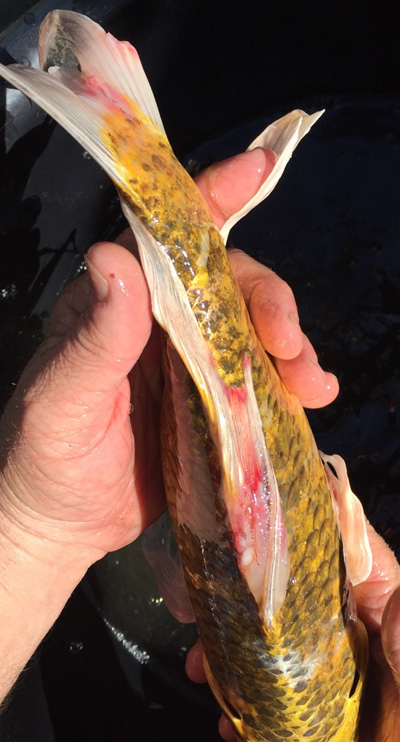I Have A New Fish
The Worst Pond Myth, Busted WIDE Open
November 24, 20164 Spring Pond Care Essentials Every Pond Needs!!
March 17, 2017
I Have A New Fish
Picture this: A frantic man rushes through the front door of my shop. He harried, frazzled, and obviously upset. He sees me, gets a small, nervous smile, and says, “My fish need help!” The next sentence is one of these: My fish are laying at the bottom of the pond, gasping for air by the waterfall, jumping like Shamu at Sea World, or not eating, and they ALWAYS eat!
I ask, “Did you add new fish three weeks ago?” He looks at me like live blackjack online I’m the palm reader at the state fair, and says, “Yes! How did you KNOW that!?!!?!??!”
Here’s the skinny on adding new fish: Quarantine, quarantine, quarantine, quarantine.

Did I say it enough? Do it. It is as simple as that.
Nike said it, and it’s more true with quarantining your koi than with exercise. Just do it.
When you get a new koi, whether you purchased it at a shop, a show, or it came as a gift from a friend, or your spouse, or your mom’s neighbor’s daughter’s hairdresser’s boyfriend, and you KNOW, beyond a shadow of a doubt, these koi are SAFE, QUARANTINE.
A few simple steps can save your koi, and you from a world of heartache. Believe me, I speak from experience. Please do it even if the dealer, friend, or neighbor says that the fish have been quarantined.
Set up a simple tub, wading pool, aquarium, whatever works for you, with a filter on it, and a couple of permanent residents to keep the filter active.
Make sure it is large enough to house the biggest koi you are likely to purchase.
My system is one of simple prevention. Once you have your new bouncing baby koi in hand, get him set up in the quarantine tank. The most common parasites are easily treatable in a small environment like this.
My typical routine is to treat for flukes, anchor worm, fish lice, costia, trichodina, chilodnella, epistylis, and ich.
Medicines vary from state to state, so get what is available in your area to treat these parasites.
Keep in mind that in the early stages, several of these parasites are easily treatable using salt, so make sure a good quality salt is part of your quarantine process.

Follow all procedures listed in the medications you use, and be sure not to mix medications that should not be used with others. This is the easiest way to kill your koi quickly.
The other part of quarantining is to help prevent bacteria from getting in your pond. We feed anti-bacterial food during quarantine, and treat for bacteria topically also to help insure the safety of our previous residents.
We are typically treating for flexibacters, aeromonas, and streptococcus, so see what is in your neck of the woods, and treat accordingly.
Again, salt is a safe and simple ally for many of these guys in the early stages, without the dangerous side affects of some of the stronger medications.
After the treatment period is complete, (according to procedures on your medications) your fish can now be added to your pond. The old adage, “An ounce of treatment is worth a pound of cure” is never more true than when it comes to quarantining your fish. Learn from my mistakes and set up a quarantine tank. Your fish will thank you.
For daily pond pro tips, follow us on SnapChat, Instagram, Facebook, and Twitter
Life is Short, Enjoy Koi!
Eric Triplett
The Pond Digger
Connect with The Pond Digger:
The Pond Digger on Facebook: www.facebook.com/theponddigger
The Pond Digger on Periscope: www.periscope.tv/theponddigger
The Pond Digger on Instagram: www.instagram.com/theponddigger
The Pond Digger on Pinterest: www.pinterest.com/theponddigger
The Pond Digger on Twitter: www.twitter.com/theponddigger
The Pond Digger on Youtube: www.youtube.com/theponddigger
The Pond Digger on Snapchat: www.snapchat.com/add/theponddigger




